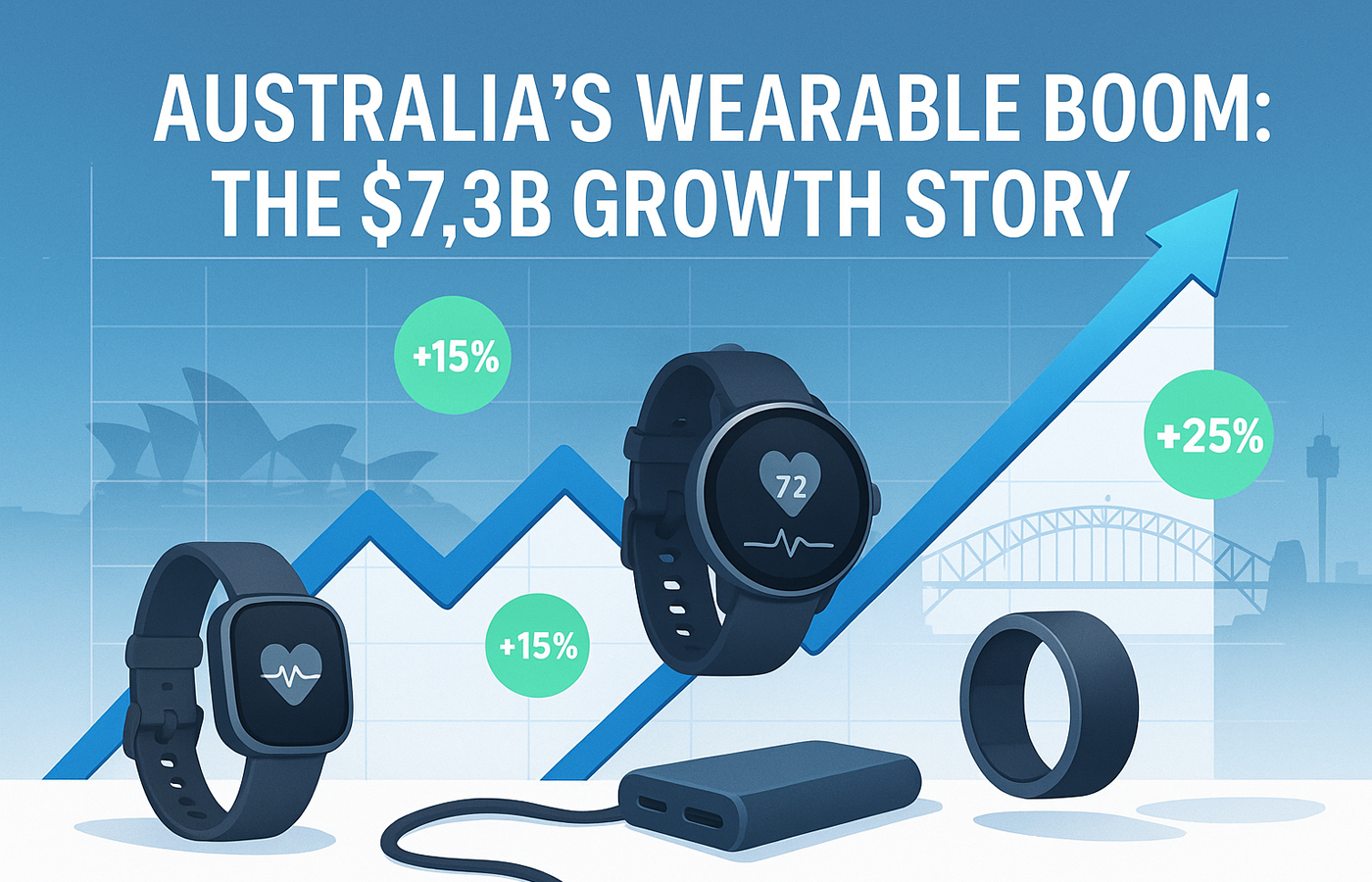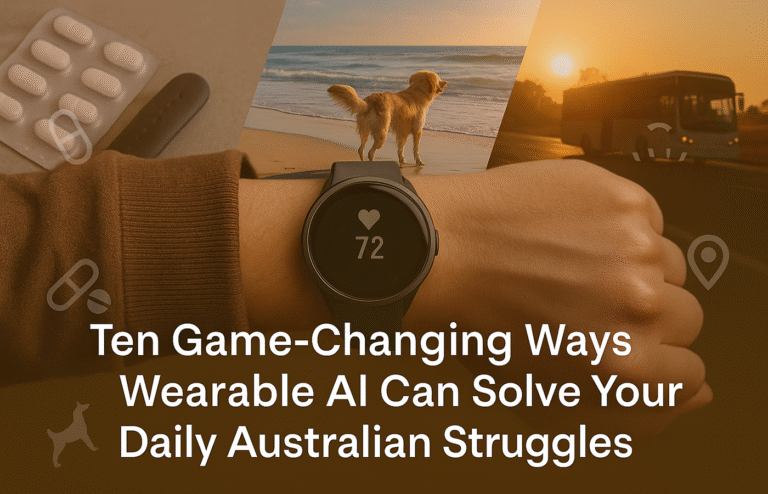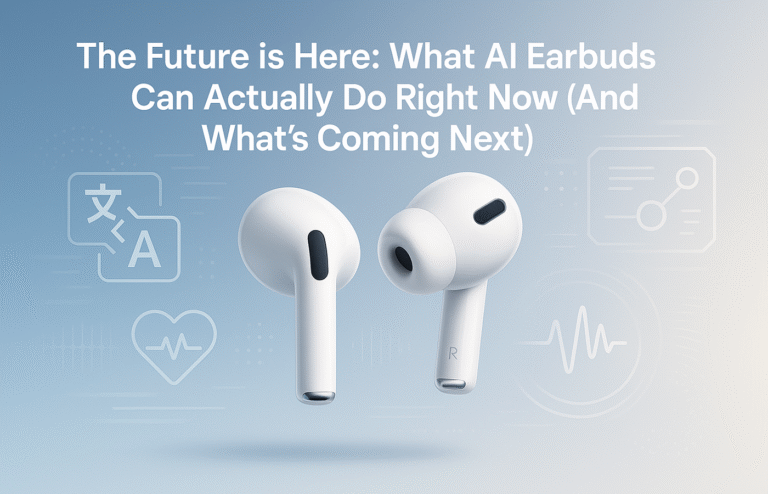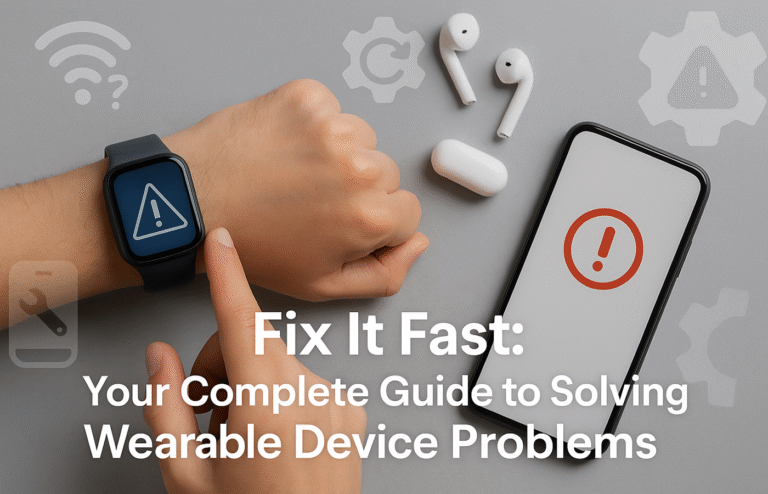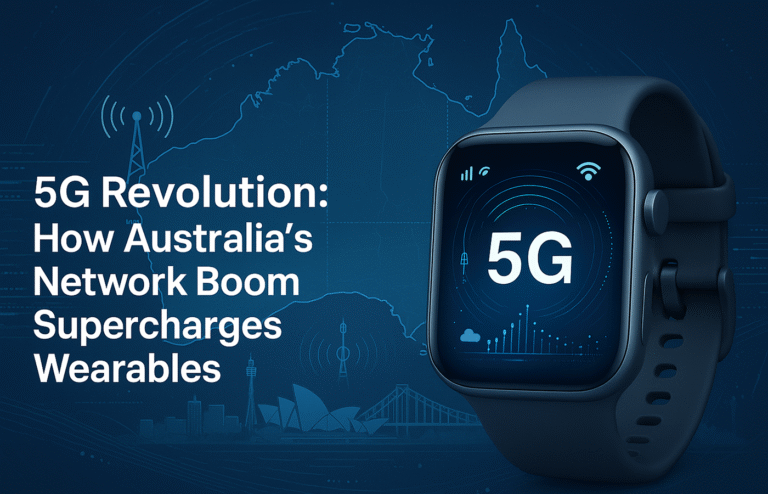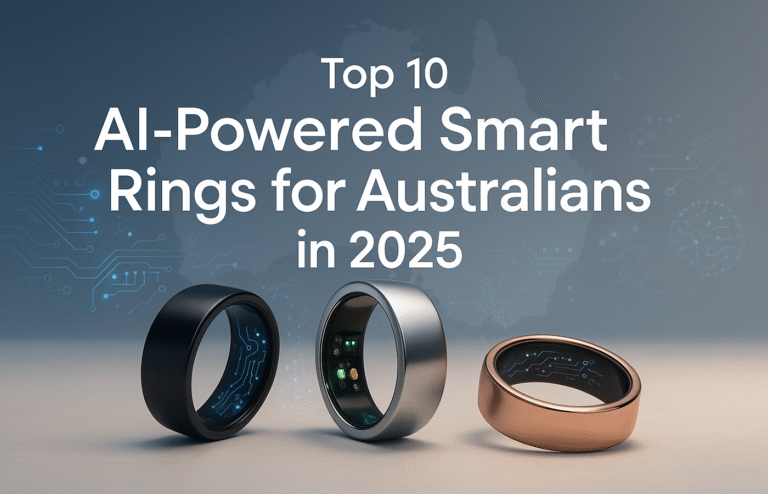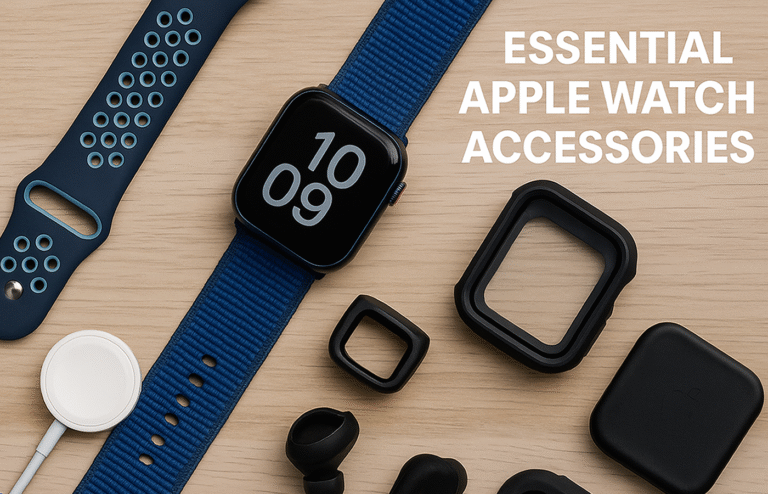Australia’s Wearable Boom: The $7.3 Billion Growth Story by 2030
Australia’s wearable technology market will reach $7.31 billion by 2030, growing from $3.99 billion in 2025 at an impressive 12.90% CAGR driven by unique local factors.
Primary Growth Drivers:
● Healthcare applications registering fastest growth addressing aging population and healthcare worker shortages
● Corporate adoption for workplace safety monitoring, particularly in mining industry operations
● Consumer electronics segment dominating with 33% market share in smartwatches and fitness trackers
Market Dynamics:
● International players (Apple, Samsung, Huawei) currently dominate despite strong local demand
● Government digital health initiatives creating integration pathways with healthcare systems
● 5G infrastructure expansion enabling advanced wearable capabilities across Australian cities
Strategic Implications:
● Healthcare integration transitioning from experimental to essential for competitive delivery
● Corporate wellness programs becoming major adoption catalysts with measurable impact
Opportunity:
Australia’s unique demographic, geographic, and regulatory environment creating distinct wearable technology adoption patterns.
Australia’s Wearable Boom: The $7.3B Growth Story
Australia’s wearable technology market is experiencing remarkable growth, with projections showing it will reach $7.31 billion by 2030. This represents an impressive 12.90% compound annual growth rate (CAGR) from the current market size of $3.99 billion in 2025. But what’s driving this explosive expansion, and why is Australia’s wearable journey different from the rest of the world?
The answer lies in a perfect storm of demographic shifts, healthcare pressures, and uniquely Australian opportunities that are creating demand patterns unlike anywhere else globally. From mining sites in Western Australia to aged care facilities in suburban Sydney, wearable technology is becoming essential rather than optional.
The Numbers Paint a Compelling Picture
When we examine the trajectory from $3.99 billion to $7.31 billion over five years, we’re looking at one of Australia’s fastest-growing technology sectors. This growth rate significantly exceeds Australia’s GDP expansion and rivals the smartphone boom of the late 2000s.
However, despite this remarkable growth potential, the market is currently dominated by international players like Huawei Technologies Co. Ltd, Apple Inc., and Samsung Electronics Co. Ltd rather than local companies. This creates both challenges and opportunities for Australian businesses looking to capture value from domestic market expansion.
What makes Australia’s growth story particularly interesting is how local factors are shaping demand in ways that differ markedly from global trends. While international markets focus heavily on fitness and consumer electronics, Australia’s growth is being driven by healthcare integration, workplace safety, and demographic pressures that create unique market dynamics.
Healthcare: The Primary Growth Engine
Healthcare applications are expected to register the fastest growth rate from 2023 to 2030, driven by growing customer concerns over fitness and health. This trend is particularly pronounced in Australia due to several converging factors.
Australia’s healthcare system faces unprecedented challenges with an aging population and critical healthcare worker shortages. Wearable technology is increasingly being deployed to monitor staff wellness, prevent burnout, and optimise shift scheduling across Australian hospitals and healthcare facilities.
Medical wearables, including wearable ECG monitors for heart rhythm tracking and specialised diagnostic devices, are gaining acceptance as both TGA and FDA approvals make them viable for clinical use. Australian consumers demonstrate particularly high trust in regulated medical devices, making this segment especially promising.
For example, the Apple Watch Series 10, starting at RRP A$649 inc. GST, includes advanced health monitoring capabilities that can detect irregular heart rhythms—a condition affecting over 500,000 Australians. This type of clinical-grade functionality in consumer devices is driving adoption among both healthcare professionals and health-conscious consumers.
Demographic Pressures Creating Opportunity
Australia’s rapidly aging population is creating unprecedented demand for health monitoring technology. This demographic shift affects multiple market segments simultaneously, from individual consumers to aged care facilities and family caregivers.
Healthcare workers represent a particularly valuable market segment with specific needs including extended 12+ hour shifts and strict hygiene requirements. These professionals are increasingly adopting wearables for fatigue monitoring, stress management, and health tracking, creating strong professional networks that drive broader adoption through word-of-mouth recommendations.
The aged care sector is experiencing remarkable innovation, with 10 Artificial Intelligence companies in Wearable Technology in Australia focusing primarily on aged care applications. Companies like Gabriel, Talius, HomeGuardian, Eve Care, and BLESEN are developing specialised solutions for fall detection, medication reminders, and health monitoring that extend beyond individual consumers to healthcare facilities and home care services.
Corporate Wellness: The Enterprise Catalyst
Australian businesses are increasingly recognising wearable technology as a strategic investment in employee health and productivity. This corporate adoption is being driven by factors unique to the Australian business environment, including stringent workplace safety regulations and rising healthcare costs.
Australia’s mining industry, a cornerstone of the national economy, is leading wearable adoption for worker safety monitoring, fatigue detection, and environmental hazard alerts. This industrial application represents a significant growth driver that’s unique to resource-rich economies like Australia’s.
Moreover, corporate wellness programs are becoming major adoption catalysts, with Australian companies incorporating wearable devices into employee wellness initiatives that demonstrate measurable impacts on healthcare costs and productivity. The combination of occupational health and safety requirements with growing wellness program adoption creates substantial enterprise demand.
Technology Infrastructure Enabling Growth
Australia’s expanding 5G network infrastructure is enabling new wearable capabilities, from real-time health monitoring alerts to enhanced augmented reality experiences. Current 5G coverage across Australian cities and growing regional coverage creates the technological foundation that supports more sophisticated wearable applications.
This improved connectivity enables features like real-time health data sharing with healthcare providers, emergency response integration, and cloud-based AI processing that enhance device capabilities beyond what’s possible with slower networks. For Australian users, particularly those in remote areas, this connectivity improvement is crucial for accessing advanced wearable features.
Consumer Electronics: The Foundation Market
Consumer Electronics held a dominant position with more than 33% share in 2023, driven by increasing adoption of smartwatches, fitness trackers, and health monitoring devices. Australian consumers demonstrate high disposable income and early technology adoption patterns, particularly in major urban centres.
Smartwatches continue to dominate this segment, holding more than 32% of the global wearable AI market in 2023 and over 40% market share with expectations to cross $190.7 billion by 2034. Australian consumers particularly favour devices that can handle extreme weather conditions and outdoor activities, driving demand for rugged, long-battery-life devices like those from Garmin and other outdoor-focused brands.
Government Initiatives Supporting Growth
The Australian government’s digital health initiatives are creating new pathways for wearable technology integration into the healthcare system. While full Medicare integration remains under development, pilot programs are exploring how wearable data can inform preventive care strategies and support chronic disease management.
These initiatives are particularly important given Australia’s high rates of chronic diseases like cardiovascular disease and diabetes—conditions that benefit significantly from continuous monitoring through wearable devices. The regulatory clarity provided by the Therapeutic Goods Administration (TGA), combined with Consumer Law protections, gives Australian consumers confidence in wearable technology investments.
Regional and Geographic Opportunities
Australia’s unique geographic challenges are creating distinct opportunities for wearable technology adoption. In rural and remote areas where healthcare access is limited, wearable technology provides continuous health monitoring that can alert users and healthcare providers to potential issues before they become emergencies.
The country’s strong outdoor recreation culture drives demand for wearables with GPS tracking, emergency communication, and environmental monitoring capabilities. Devices that can handle extreme weather conditions and provide safety features for outdoor activities find particularly strong demand among Australian consumers.
Market Challenges and Dynamics
Despite strong growth prospects, the Australian market faces significant challenges from international competition. The dominance of global technology companies means that local businesses must find specialised niches or unique value propositions to compete effectively.
Privacy and data sovereignty concerns are becoming increasingly important to Australian consumers, particularly regarding how international companies handle personal health information. This creates opportunities for companies that can provide strong privacy protections and local data storage solutions.
Infrastructure limitations, while improving, still constrain adoption in some remote areas where connectivity remains limited. However, advances in on-device processing and improved battery technology are helping address these limitations.
Looking Ahead: The Path to $7.3 Billion
The trajectory toward $7.31 billion by 2030 isn’t just about technology adoption—it represents a fundamental shift in how Australians approach health, safety, and wellness. Several key trends will shape this journey:
Healthcare system integration will accelerate as pilot programs demonstrate value and regulatory frameworks evolve to support broader wearable data use. Corporate adoption will expand beyond wellness programs to include safety monitoring and productivity optimisation across more industries.
Consumer awareness and acceptance will continue growing as devices become more sophisticated and demonstrate clear value propositions. The success of early adopters in healthcare and enterprise segments will drive broader consumer adoption.
Strategic Implications
For Australian consumers, this market growth means more choice, better integration with local healthcare systems, and improved support for uniquely Australian conditions and requirements. Early adoption positions consumers to benefit from evolving healthcare integration and emerging applications.
For businesses, wearable technology is becoming less optional and more essential for competitive advantage. Companies that establish wearable integration capabilities early will be better positioned for future growth and regulatory compliance.
For the healthcare sector, integration with wearable technology is transitioning from experimental to necessary for competitive healthcare delivery. Providers who establish wearable data integration capabilities will be better positioned to serve patients and manage costs effectively.
The growth to $7.31 billion by 2030 represents more than market expansion—it signals Australia’s evolution toward a technology-enabled approach to health, safety, and wellness that leverages our unique demographic and geographic characteristics. Understanding these trends is essential for anyone looking to participate in or benefit from this remarkable transformation.

